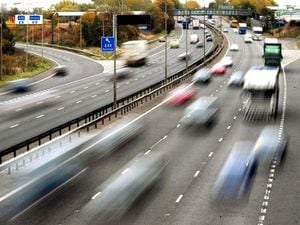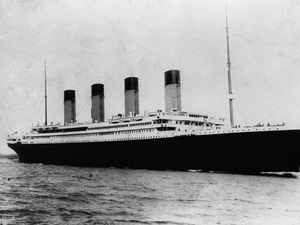Shropshire Star comment: When 'smart' spells danger
Highways bosses appear to be convinced that so-called ‘smart’ motorways are the future.

Miles and miles of Britain’s roads are being transformed, with their hard shoulders turned into an active lane in a bid to ease congestion.
But not everyone shares the same level of enthusiasm for a system that has been controversial almost from the moment it was first dreamt up.
Instead, staff have been told to head to a “safe location” and wait for the driver’s vehicle to be moved there by Highways England.
We can assume that the choice of language used by the AA is significant, given that one of the key criticisms of smart motorways is that when a hard shoulder is in use, it immediately becomes a danger zone in the event of a breakdown or a smash.
These concerns are not unfounded, as there have been a number of accidents involving drivers stranded on the inside lane. Tragically, some of these incidents have led to fatalities.
Such was the case with Anthony Marston, of Telford, who stopped his Mercedes E300 estate, between junctions 10 for Wolverhampton and 10a for the M54.
Worryingly, it has now emerged that sensors which are able to detect stationary vehicles are fitted to just two sections of the M25 – just 18 per cent of Britain’s smart motorway network.
Yet Highways England has made no commitment to fitting the sensors to existing roads or those that already under construction.
This state of affairs is simply not good enough. If this country is to persist with smart motorways, then every inch of affected road must be fitted with sensors.
The most important consideration on our road networks should always be the safety of the public.
+++
If the leaked report into HS2 is anything to go by, we should all be deeply concerned about the prospects for the controversial line.
On one hand, the business case for it looks more and more hopeless each day.
Its budget – having already leaped from £33 billion, to £55.6bn, to £81bn – could now surge past the £100bn mark, a figure that even the project’s biggest supporters will have difficulty justifying.
Furthermore, the report strongly suggests that even if the Government does press ahead with the line, it will be a very different beast from the one initially planned.
While the route from London to Birmingham looks set to get the green light, the northern sections may well be delayed and downgraded.
See also:
This risks the worst of both worlds, with a fortune spent on a major infrastructure project that in no way fulfils what it promised to.
Bearing in mind that the not insignificant sum of £8bn has been spent on HS2 so far, its supporters need to consider one very important question.
At what point does HS2 cease to become value for money?





